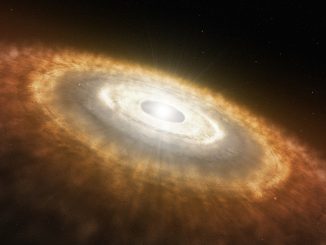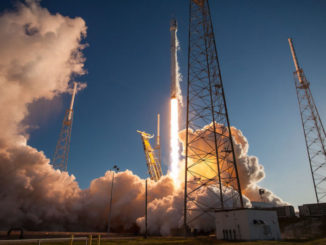
Researchers at the Australian National University and the Niels Bohr Institute in Copenhagen have calculated that billions of stars in the Milky Way will have between one and three planets in the habitable zone conducive to liquid water, by using a law proposed in 1766 that helped to discover Uranus.
The Titius-Bode law, proposed by J D Titius and later described mathematically by Johann Elert Bode in 1772, has been given a new lease of life by researchers aiming to expand the range of planets found with the Kepler satellite. To date, astronomers have found around 1,900 exoplanets in our own Galaxy, the Milky Way, with a further 3,000 potential planetary candidates awaiting further investigation. A large proportion of the planets detected to date however are hot worlds close to their stars. Finding alternative ways in to search for planets at distances from their stars more suitable for potential life is motivation enough to revive a law once described as a mathematical oddity.
“Using the Titius-Bode law we tried to predict where there could be more planets further out in 151 planetary systems,” explains Steffen Kjær Jacobsen, a PhD student in the Astrophysics and Planetary Science research group at the Niels Bohr Institute at the University of Copenhagen.
The Titius-Bode law, which was also used to correctly predict the location of the Asteroid Belt and the largest object in it, Ceres, is a straightforward mathematical relation that describes the distances of planets from the Sun in astronomical units (AU). One astronomical unit is the mean distance from Earth to the Sun – about 149.6 million kilometres. Starting with a simple progression of numbers (0, 3, 6, 12, 24, etc..), 4 is added to each number and then the result is divided by 10. This gives a set of values that roughly correlate with the actual distances of the planets from the Sun. However, for the outer-most planet Neptune, the numbers start to deviate and for this reason the law had been largely thought of as a mathematical coincidence rather than an actual physical law.
Yet of the 151 multi-planet systems examined by researchers, each of which have between three and six planets that have already been discovered, it was found that a substantial number of these planets had orbits that fitted well with the Titius-Bode law. Could this approach, used over 200 years ago to find objects in our Solar System, really be a viable method for hunting exoplanet Earth-like worlds? Jacobsen believes so.
“The results from our research suggest that 124 planetary systems were a ‘good fit’ to the data, meaning these systems were as good as, or a better fit, to the generalised Titius-Bode relation we used, than that used to calculate the orbits of planets in our own Solar System,” says Jacobsen. “So in that sense there does appear to be a tendency for planetary systems to follow a generalised Titius-Bode relation.”

Searching for planets in a system where two to three planets have already been observed might seem counter-intuitive, but their discovery is actually advantageous when trying to predict other neighbourly orbits with the Titius-Bode law. If the positions of one or two larger planets are already known and if you know how long it takes for these planets to orbit around their host star, you can calculate their position in the planetary system. This, if the Titius-Bode law is correct, allows you predict the orbit of any ‘missing’ planets that are lurking unseen.
“Seeing how many systems fit our generalised Titius-Bode relation, I would be hopeful that the formula has some predictive power,” says Jacobsen. “We have made a priority list with 77 planets in 40 planetary systems to focus on because they have a high probability of making a transit.”
It is not the first time that the Titius-Bode law has been used to search for exoplanets, however previous research did not produce such favourable results, with only a very small number of exoplanets being detected from its predictions. Did this outcome worry Jacobsen at all?
“[Previous] researchers used different criteria in their calculations that was not as extensive as our own,” he says. “As such, four our priority list we expect that we will have a higher detection rate instead of the (roughly) 5 percent that previous searches found.”
The odds look appealing then and Jacobsen is realistic about the outcome. “We do not expect all systems to adhere to this relation, as many things can happen in a planetary system that will affect its planets’ positions after their formation, but we hope to find around 15 percent of the planets on the list,” says Jacobsen.
With the calculations done, the next step in finding our exoplanet equivalent is getting other researchers on board to search for these planets where liquid water and hopefully life could possible exist.



